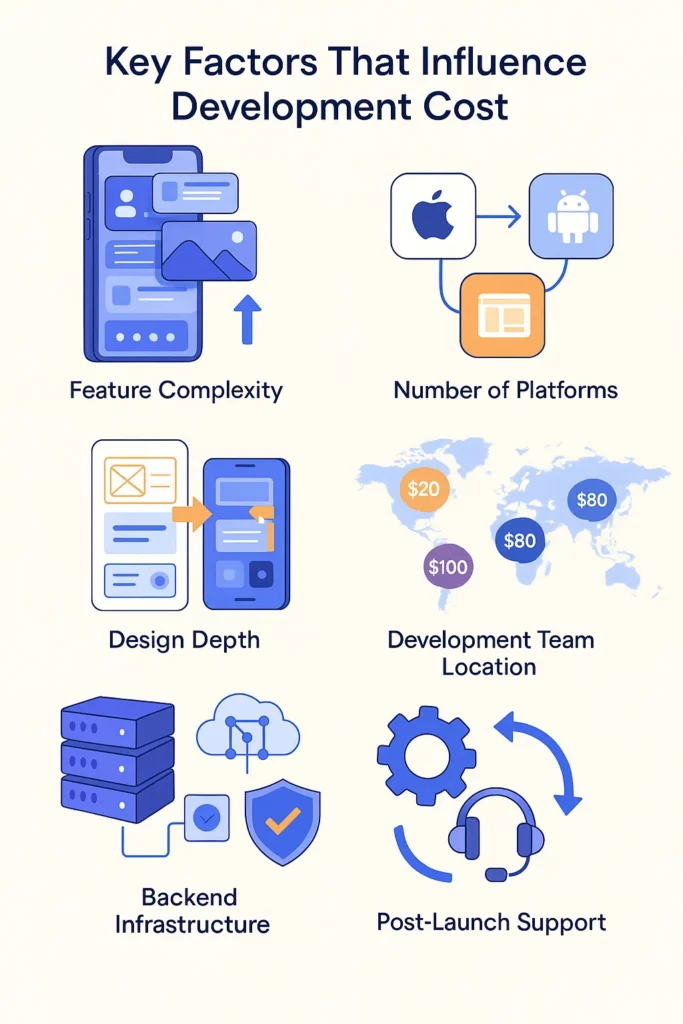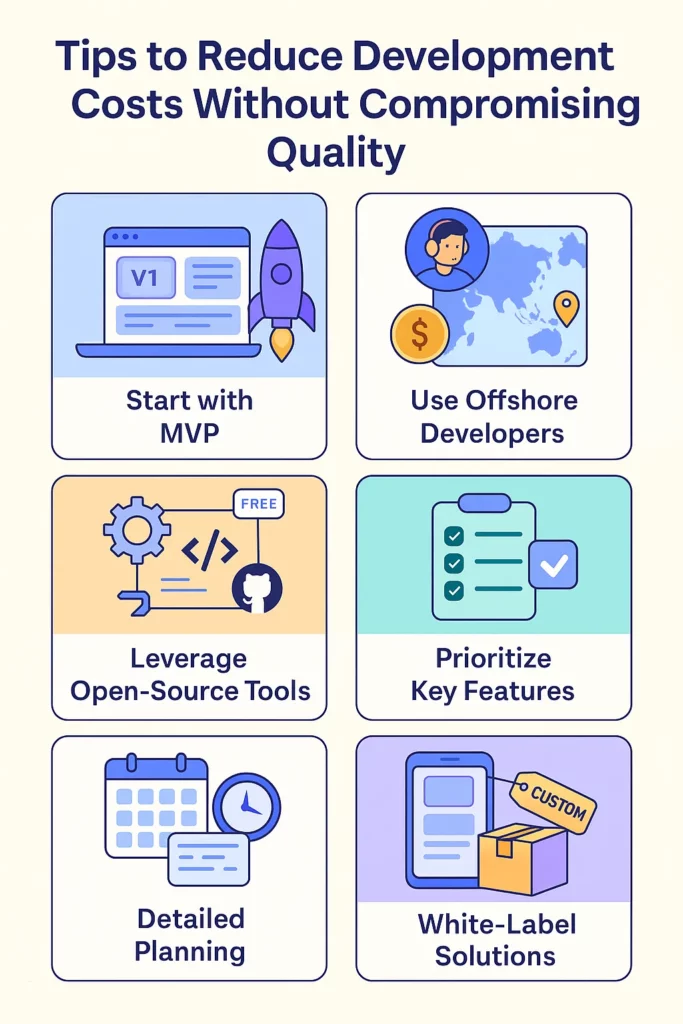Swiggy-Like Food Delivery App Cost Breakdown
Create a powerful, customizable food delivery solution with Miracuves’ Swiggy, equipped with high-performance features and next-gen technology.
If you’re planning to launch a feature-rich, on-demand food delivery app similar to Swiggy, one of the first questions you’re probably asking is: “How much is this going to cost me?”
And the truth is—it depends. Your final budget hinges on several key variables: the features you need, the platforms you want to support, how customized your design is, your choice of tech stack, and whether you’re starting from scratch or customizing a white-label framework.

Key Factors That Influence Swiggy Style App Development Cost
There’s no one-size-fits-all pricing model when it comes to building an on-demand food delivery platform. The development cost depends on a combination of technical decisions, feature scope, team composition, and long-term planning. Let’s break down the core factors that influence your total budget:
1. Feature Set Complexity
The more complex your feature set, the higher your cost. A basic app with restaurant listings, order placement, and delivery tracking is more affordable. But if you’re aiming for dynamic pricing, live order tracking, promo engines, AI-driven food suggestions, or multi-city support, the cost will rise accordingly.
2. Number of Platforms
Every new platform adds design, development, and testing hours. To optimize costs, many startups go with cross-platform development (like Flutter or React Native) to deliver native-like performance at a reduced cost.
3. UI/UX Design Requirements
A user-friendly, intuitive design is critical in the food delivery space. A templated interface with basic visuals costs less but might not offer competitive edge. If you’re aiming for a polished design with animations, custom interactions, and branded visuals, expect a higher investment.
4. Location of Your Development Team
Where your development team is based will significantly influence cost-per-hour. Partnering with an experienced offshore firm—like Miracuves—can help you get high-quality output while keeping your budget in check.
5. Backend Infrastructure
From managing restaurant inventories to tracking delivery agents in real-time, your backend must be scalable, secure, and fast.
6. Post-Launch Support & Maintenance
Building the app is just the beginning. You’ll need to budget for updates, new features, API upgrades, OS compatibility fixes, and server hosting. A good rule of thumb: reserve 10–20% of your initial dev cost annually for maintenance.
Swiggy Like App Cost Estimates by Type
To help you plan your investment more strategically, here’s a breakdown of the typical development costs based on the scope of your app—ranging from a minimal prototype to a full-featured food delivery ecosystem. Your budget will reflect how deep your feature set goes and whether you’re aiming for validation, early traction, or market dominance.
|
App Type
|
Estimated Cost Range (USD)
|
Description
|
|---|---|---|
|
MVP (Minimum Viable Product)
|
$8,000 – $15,000
|
Focuses on core functionality: user sign-up, restaurant browsing, order placement, basic order tracking, and a simple admin panel. Ideal for testing demand in a small market.
|
|
Standard Version
|
$15,000 – $30,000
|
Adds integrated payments, push notifications, user ratings, discount codes, and a dedicated restaurant dashboard. Suitable for regional scaling and gaining initial traction.
|
|
Full-Featured App
|
$30,000 – $60,000+
|
Includes real-time tracking, loyalty programs, AI-powered suggestions, advanced analytics, multi-language support, and an operations dashboard. Built for competitive growth and nationwide reach.
|
Swiggy-Style Food Delivery App Development Cost by Miracuves (2026 Pricing)
To help you plan your investment more strategically, here’s a breakdown of the Swiggy Clone App Development Cost by Miracuves.
These cost ranges include end-to-end design, backend development, and deployment. (Third-party API costs such as maps, SMS, and payment gateways are billed separately.)
|
App Type
|
Estimated Cost Range (USD)
|
Description
|
|---|---|---|
|
MVP (Minimum Viable Product)
|
$999 – $1,499
|
Includes basic restaurant listing, user registration, simple order placement, and order tracking — perfect for testing small markets and validating business demand.
|
|
Standard Version
|
$1,500 – $2,099
|
Adds integrated payments, push notifications, coupon systems, user ratings, and restaurant dashboards for smoother regional rollout and scaling.
|
|
Full-Featured App
|
$2,899 (Miracuves)
|
A complete Swiggy-style platform (Web + App + Admin) with real-time tracking, loyalty programs, AI-powered recommendations, multi-language support, and advanced analytics.
|
Note: These estimates reflect Miracuves’ 2025 full-stack development packages.
Third-party integrations (payment APIs, SMS gateways, and live tracking APIs) are billed separately.
Launch your Swiggy-style delivery app in just 3–9 days with Miracuves — a trusted name in scalable, performance-driven clone solutions.
Region-Wise Development Cost Comparison
Where you choose to build your Swiggy-style app plays a major role in determining your overall budget. Developer hourly rates vary dramatically across regions, but lower cost doesn’t always mean lower quality—especially if you work with seasoned offshore teams who specialize in food delivery platforms.
Here’s a comparison of hourly rates and what it might cost to build a standard Swiggy-style app in different parts of the world:
|
Region
|
Hourly Rate (USD)
|
Typical Cost for Standard App
|
|---|---|---|
|
North America
|
$100 – $200/hr
|
$100,000 – $200,000+
|
|
Western Europe
|
$80 – $150/hr
|
$80,000 – $160,000+
|
|
Eastern Europe
|
$40 – $80/hr
|
$40,000 – $90,000+
|
|
India & Southeast Asia
|
$20 – $50/hr
|
$20,000 – $60,000+
|
Why Many Founders Choose Offshore Development
Lower hourly rates without sacrificing reliability
Larger talent pools with experience in mobile, delivery, and e-commerce apps
Faster delivery timelines due to leaner teams and prebuilt components
Cost Breakdown by Development Stage
Understanding how your development budget gets distributed across different phases of the project can help you allocate resources wisely—and avoid costly surprises during the build. Here’s a typical breakdown of where your money goes in a Swiggy-style food delivery app project:
|
Development Stage
|
Estimated % of Total Cost
|
Includes
|
|---|---|---|
|
Discovery & Planning
|
5–10%
|
Market research, competitor analysis, defining user personas, feature scoping, technical requirements.
|
|
UI/UX Design
|
10–15%
|
Wireframing, prototyping, responsive design, visual branding, user experience mapping.
|
|
Frontend & Backend Dev
|
40–50%
|
Core feature development, database architecture, APIs, payment integrations, dashboard and logic build.
|
|
Testing & QA
|
10–15%
|
Manual and automated testing, bug fixing, device/browser compatibility checks, performance tuning.
|
|
Deployment & Launch
|
5–10%
|
App store submission (Android/iOS), server setup, production deployment, performance monitoring tools.
|
|
Maintenance & Updates
|
10–20%
|
Post-launch bug fixes, new features, server maintenance, user support, compliance updates.
|

Tips to Reduce Development Costs Without Compromising Quality
Building a Swiggy-style food delivery app doesn’t have to drain your budget. With the right strategies and decisions, you can significantly reduce costs while still delivering a robust, scalable product. Here’s how savvy founders cut down on expenses without sacrificing quality:
1. Start with a Focused MVP
Avoid feature overload in your first version. Focus on essentials:
Customer app (browse, order, pay)
Restaurant panel (manage orders)
2. Choose Offshore Teams with Domain Expertise
Working with experienced offshore developers—especially in regions like India or Southeast Asia—can reduce hourly costs by over 50%. But don’t just look at price. Choose a team that:
Has experience with on-demand food delivery apps
3. Use Open-Source Tools & Third-Party APIs
Instead of building everything from scratch, leverage proven tools and integrations:
Google Maps or Mapbox for geolocation
Firebase or OneSignal for notifications
4. Prioritize High-Impact Features
Focus your resources on features that drive retention and revenue:
- Live order tracking ,
Real-time ETA updates
Define Scope Clearly Before Development Begins
Many cost overruns come from unclear requirements and last-minute feature requests. Prevent this by:
Creating a detailed feature roadmap
Approving wireframes before coding starts
Choose the Right Development Partner
Building a food delivery app like Swiggy isn’t just about writing code—it’s about launching a reliable, competitive business that users trust from day one. The development partner you choose can make or break that experience. Here’s what to look for when selecting your tech team:
1. Deep Domain Experience in On-Demand Delivery
2. Modular, Scalable Architecture
3. Speed and Reliability
4. End-to-End Support
Conclusion
Understanding the cost of building a Swiggy-style app is only half the equation. Making smart decisions about feature scope, team structure, and development strategy is what leads to real, scalable success.
Start lean, stay focused, and work with people who’ve done it before. Whether you’re building for a single city or launching a national delivery brand, the key is strategic execution—not just raw development hours.
Miracuves specializes in white-label, growth-ready food delivery solutions—customizable for any region or business model. From idea to launch (and beyond), we help food tech entrepreneurs build smarter, faster, and more affordably.
Explore our ready-to-deploy food delivery solutions or contact our team for a personalized development roadmap.
Frequently Asked Questions
With Miracuves’ ready-made Swiggy-style clone, you can launch in 3–9 days (setup, configuration, and deployment included); custom add-ons may extend the timeline slightly.
Yes. A complete on-demand food delivery ecosystem typically includes:
A customer app (to browse, order, and track)
A restaurant dashboard or app (to manage orders and menus)
A delivery agent app (for pickups and navigation)
An admin panel (to manage all users, analytics, payments, and settings)
Absolutely. Many startups begin with Android only to validate demand and reduce initial cost. Once there’s traction, you can scale to iOS and other platforms. Alternatively, a cross-platform approach using Flutter or React Native can help you launch both simultaneously.
Commonly used stacks include:
Node.js or Laravel for backend services
Firebase or AWS for cloud infrastructure
MongoDB or PostgreSQL for databases
Socket.io for real-time updates and tracking
Your tech stack should support scalability, real-time functionality, and strong security.
Popular monetization strategies include:
Commission per order from restaurants
Delivery charges from customers
Promotional listings and sponsored visibility for restaurants
Subscription models (e.g., free delivery or priority support)
Surge pricing during peak hours



